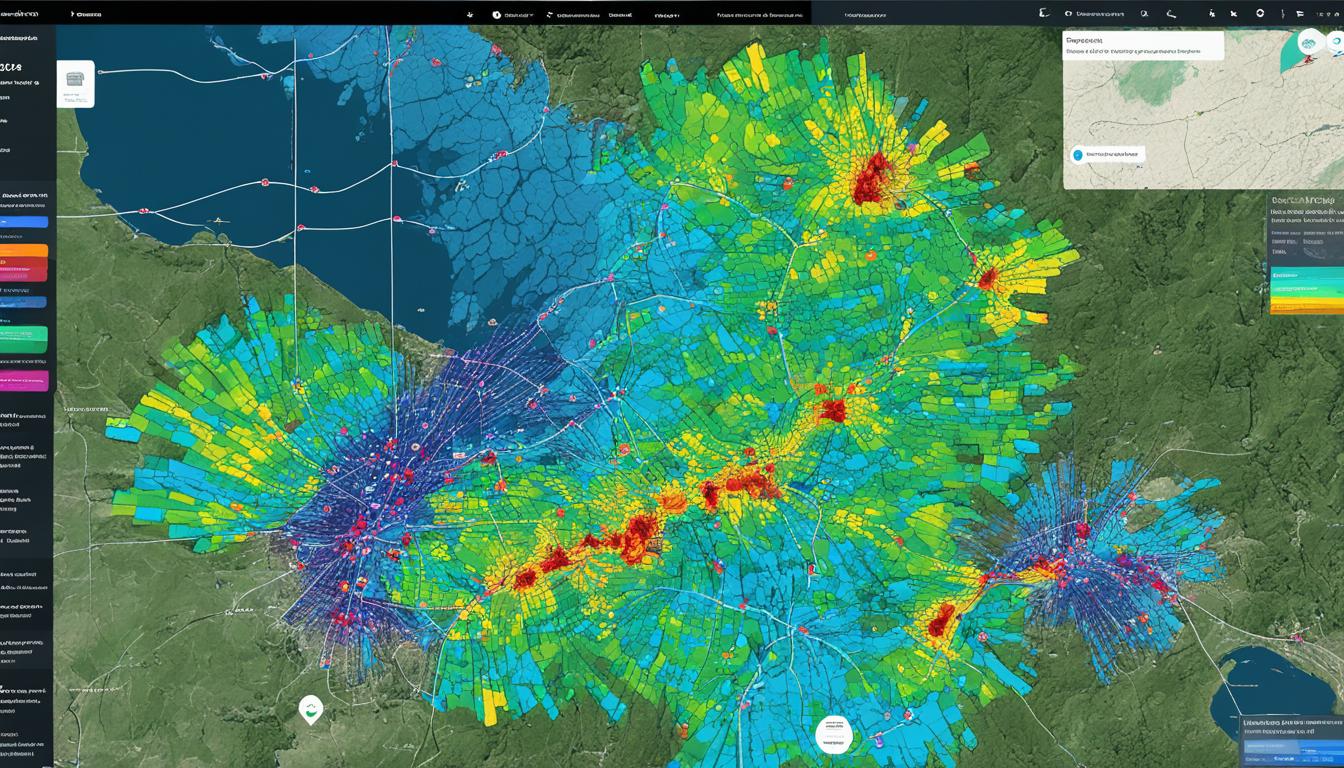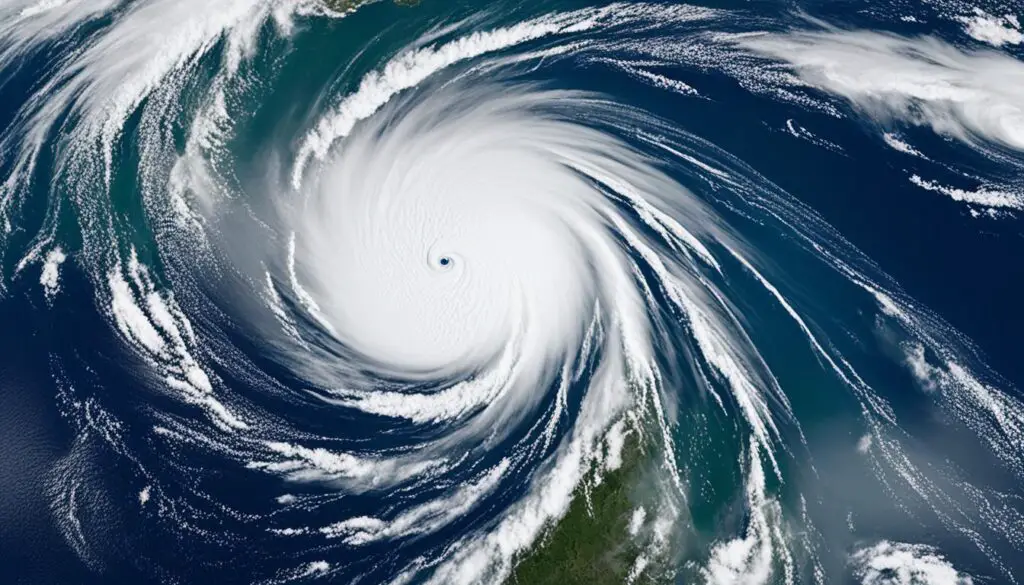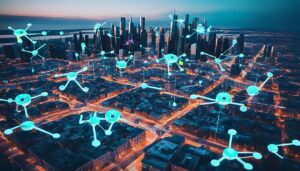
Technology has always played a crucial role in our efforts to predict and manage natural disasters. And now, with the advent of Artificial Intelligence (AI), we have a powerful tool at our disposal that is revolutionizing the way we approach crisis readiness and response. AI’s capabilities in natural disaster prediction and management are not only enhancing our ability to protect ourselves but also saving lives in the process.
AI is transforming the field of natural disaster prediction by utilizing advanced algorithms and machine learning techniques. Through the analysis of vast amounts of data, including weather patterns and historical records, AI systems can predict the occurrence and severity of natural disasters with greater accuracy. This allows us to better prepare our communities and allocate resources effectively to minimize the impact of these devastating events.
Moreover, AI’s role in natural disaster management goes beyond prediction. During a crisis, AI-powered systems can assist in various aspects, including resource allocation and damage assessment. By analyzing real-time data from multiple sources, such as emergency calls and sensor networks, AI algorithms guide authorities in directing emergency responders to critical areas, optimizing logistics, and facilitating the assessment of damage.
The power of AI in natural disaster management cannot be underestimated. With ongoing advancements in AI algorithms and data analysis techniques, the future looks promising. By leveraging AI’s capabilities, we can continue to enhance our resilience and minimize the devastating impact of natural disasters on our communities.
Key Takeaways:
- AI technology is revolutionizing natural disaster prediction and management.
- By analyzing vast amounts of data, AI systems can accurately predict the occurrence and severity of natural disasters.
- AI-powered systems assist in resource allocation and damage assessment during crises.
- The future of AI in natural disaster management looks promising.
- With AI, we can enhance preparedness and protect vulnerable communities.
The Power of AI in Natural Disaster Prediction
AI technology is revolutionizing the field of natural disaster prediction by harnessing the power of data analysis and machine learning. By analyzing vast amounts of meteorological data, satellite imagery, and climate projections, AI algorithms can identify patterns and trends that indicate the occurrence and behavior of natural disasters.
One of the key applications of AI in natural disaster prediction is weather pattern analysis. AI systems can analyze historical weather data and current meteorological conditions to understand how various factors contribute to the formation of hurricanes, tornadoes, floods, and other weather-related disasters. This enables authorities and communities to better anticipate and prepare for these events.
Additionally, AI plays a crucial role in early warning systems. By continuously monitoring and analyzing real-time data, such as atmospheric conditions and seismic activity, AI algorithms can detect early warning signs of imminent disasters. These systems provide timely alerts and notifications to authorities and residents, ensuring that appropriate actions can be taken to mitigate the impact of the disaster.
AI-powered early warning systems have proven to be highly effective in saving lives and minimizing damage. For example, in 2019, an AI-based early warning system in India detected an impending cyclone and provided accurate predictions, allowing for the evacuation of over one million people in its path.
In addition to early warning systems, AI technology also enables predictive modeling for natural disasters. By analyzing historical data and incorporating various factors such as topography and population density, AI algorithms can generate models that estimate the potential impact and severity of a disaster. This information is invaluable for emergency planning and resource allocation.
The use of AI in natural disaster prediction and preparedness is a game-changer. It empowers authorities and communities with the knowledge and tools needed to make informed decisions and take proactive measures to protect lives and property.

AI in Natural Disaster Management and Response
AI technology is revolutionizing the way we manage and respond to natural disasters. By leveraging the power of advanced algorithms and machine learning, AI systems can assist in various aspects of disaster response, including resource allocation and damage assessment.
The Role of AI in Disaster Response
During a crisis, every second counts. AI-powered systems can analyze real-time data from multiple sources, such as social media, emergency calls, and sensor networks, to provide authorities with valuable insights. By identifying patterns and trends, AI algorithms help optimize resource allocation, directing emergency responders to critical areas more efficiently. This ensures that help reaches those in need faster, potentially saving more lives.
AI for Resource Allocation
Efficient resource allocation is crucial in disaster response. AI technology enables authorities to make data-driven decisions by processing large amounts of information and identifying areas that require immediate attention. By analyzing real-time data, AI algorithms can prioritize the deployment of resources, such as medical supplies, transportation, and personnel, in the most effective way possible. This ensures that resources are distributed where they are needed the most, maximizing the impact of emergency response efforts.
AI for Damage Assessment
Assessing the extent of damage in the aftermath of a natural disaster is a challenging task. However, AI can play a significant role in streamlining this process. By utilizing image recognition and satellite imagery analysis, AI algorithms can quickly identify and assess the level of destruction. This information helps authorities prioritize recovery efforts, allocate resources accordingly, and plan for the restoration of critical infrastructure. AI-powered damage assessment enables a more efficient and targeted approach to post-disaster recovery.
By harnessing the capabilities of AI in natural disaster management and response, we can improve our effectiveness in saving lives, minimizing damage, and facilitating timely recovery. The application of AI technology in disaster response continues to evolve, paving the way for more efficient and resilient communities in the face of natural disasters.

Conclusion
AI technology has had a profound impact on natural disaster management, revolutionizing our approach to crisis readiness and response. By harnessing the potential of AI, we have significantly improved our ability to predict the occurrence and severity of natural disasters, allowing us to better prepare and protect communities at risk.
With continuous advancements in AI algorithms and data analysis techniques, the future of AI in natural disaster management looks incredibly promising. By leveraging the capabilities of AI, we can continue to enhance our resilience and minimize the devastating impact of natural disasters.
As AI continues to evolve, it will play an even more significant role in crisis readiness and response. The integration of AI technology in emergency preparedness and response systems will enable faster and more accurate decision-making, enhanced resource allocation, and quicker damage assessment. AI’s ability to analyze real-time data from multiple sources will provide vital insights that can save lives and reduce the impact of natural disasters.
In conclusion, AI’s impact on natural disaster management is undeniable, and its future in crisis readiness and response is bright. By embracing and further developing AI technology, we can strive towards a more resilient and better-prepared world, where the devastating effects of natural disasters are mitigated, and more lives are saved.
FAQ
How is AI revolutionizing natural disaster prediction and management?
AI is revolutionizing natural disaster prediction and management by utilizing advanced algorithms and machine learning techniques to analyze large amounts of data. This allows for better preparation and protection against natural disasters.
What kind of data does AI analyze to predict the occurrence and behavior of natural disasters?
AI analyzes various types of data, including meteorological data, satellite imagery, and climate projections, to predict the occurrence and behavior of natural disasters.
How does AI help with early warning systems for natural disasters?
AI algorithms analyze patterns and trends in data to identify early warning signs of natural disasters. This enables real-time updates and predictions, enabling timely evacuations and resource allocation.
In what ways can AI assist in disaster response?
AI can assist in disaster response by helping with resource allocation and damage assessment. By analyzing real-time data from various sources, AI algorithms can optimize logistics and prioritize recovery efforts.
How can AI be used to assess the extent of destruction caused by natural disasters?
AI uses image recognition and satellite imagery analysis to identify and assess the extent of destruction caused by natural disasters, facilitating damage assessment and recovery efforts.
What is the role of AI in enhancing resilience and minimizing the impact of natural disasters?
By leveraging the capabilities of AI, we can improve our ability to predict and prepare for natural disasters, ultimately enhancing resilience and minimizing the impact on communities at risk.
What does the future of AI in natural disaster management look like?
With ongoing advancements in AI algorithms and data analysis techniques, the future of AI in natural disaster management looks promising. AI will continue to play a crucial role in crisis readiness and response.
Source Links
- https://www.mdpi.com/1424-8220/24/5/1628
- https://uk.finance.yahoo.com/news/multiplan-corporation-nyse-mpln-q4-145856116.html
- https://www.einnews.com/pr_news/692596630/global-business-reports-magazine-features-lithium-nickel-exploration-company-serving-the-emerging-ev-industry-evkrf








